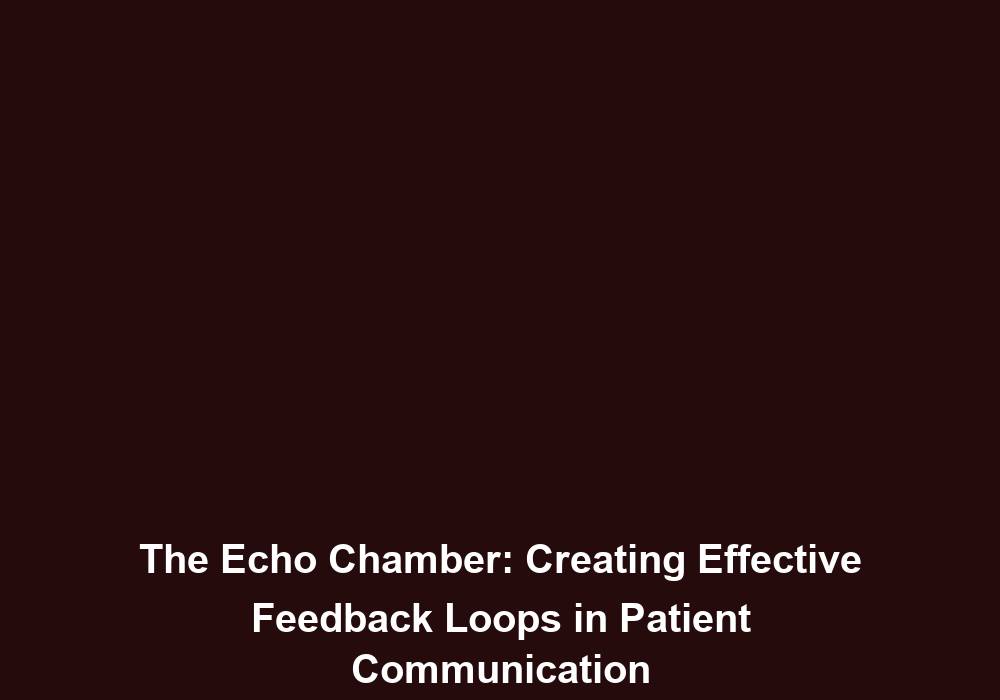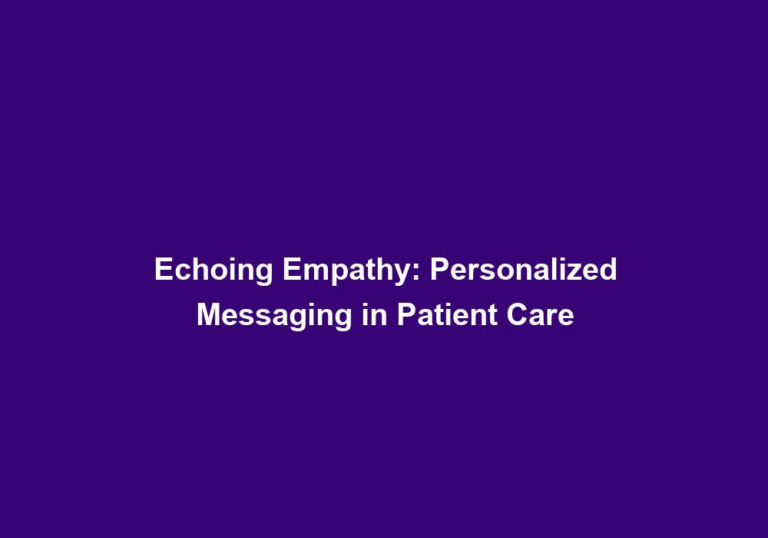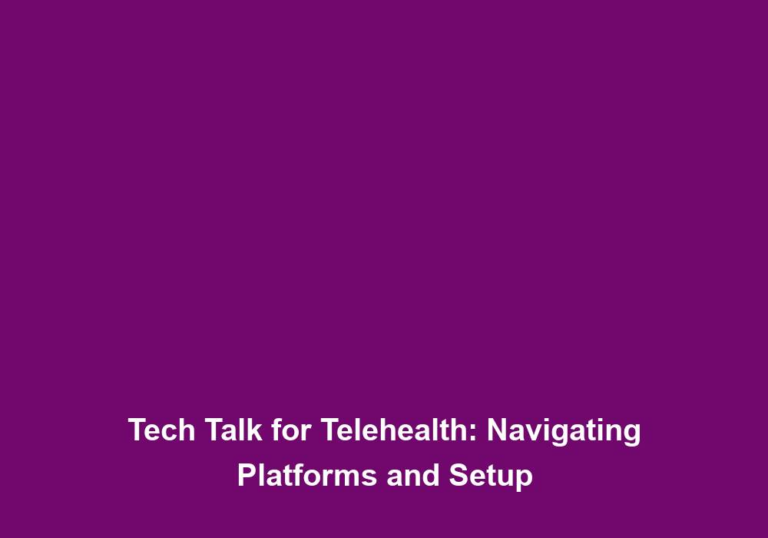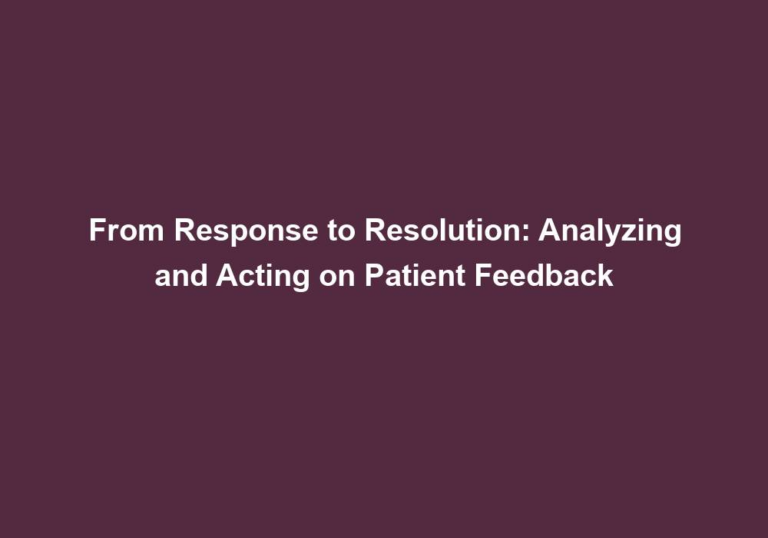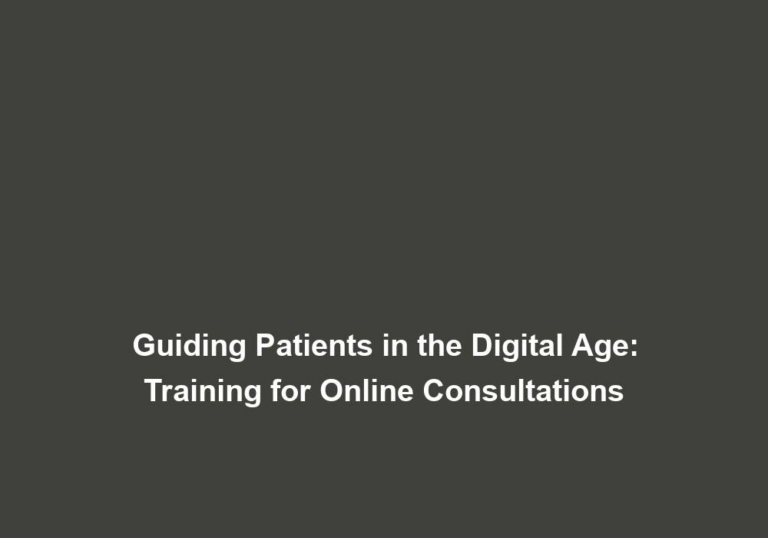The Echo Chamber: Creating Effective Feedback Loops in Patient Communication
In today’s fast-paced healthcare landscape, effective communication between patients and healthcare providers is crucial for delivering high-quality care and achieving positive patient outcomes. Creating feedback loops that facilitate open and continuous communication is essential to build trust, improve patient satisfaction, and enhance the overall patient experience. This article explores the concept of the echo chamber in patient communication and provides insights into creating effective feedback loops to promote meaningful and productive interactions.
Understanding the Echo Chamber
The term echo chamber refers to situations where information and ideas are amplified or reinforced through repetition and confirmation bias, leading to a lack of diverse perspectives and limited meaningful dialogue. In the context of patient communication, the echo chamber may manifest as a one-way flow of information from healthcare providers to patients, with little opportunity for patients to provide feedback, ask questions, or express concerns.
To overcome the echo chamber effect in patient communication, it is important to establish feedback loops that allow for two-way communication. By actively seeking and encouraging patient feedback, healthcare providers can break free from the one-sided information flow and create an environment where patients feel heard and valued.
The Importance of Feedback Loops in Patient Communication
1. Empowering Patients
Effective feedback loops empower patients by giving them a voice in their care. When patients feel heard and acknowledged, they become active participants in decision-making processes, leading to improved treatment adherence and patient engagement.
To empower patients, healthcare providers should create opportunities for patients to provide feedback and actively listen to their concerns. This can be done through regular check-ins, patient satisfaction surveys, and multiple channels for communication such as online portals, email, or dedicated feedback forms. By incorporating patient feedback into their decision-making processes, healthcare providers can tailor their approach to meet individual patient needs and improve overall patient outcomes.
2. Enhancing Patient Satisfaction
Patients who feel that their concerns and opinions are valued are more likely to experience higher levels of satisfaction with their healthcare experience. By creating feedback loops, healthcare providers can address any issues promptly, resolve conflicts, and foster a patient-centered approach that goes beyond clinical outcomes.
To enhance patient satisfaction, healthcare providers should actively solicit feedback and take prompt action to address any concerns raised by patients. By demonstrating a commitment to addressing patient feedback, healthcare providers can build trust, improve patient loyalty, and enhance their overall reputation. Positive word-of-mouth recommendations from satisfied patients can also contribute to the growth and success of the healthcare organization.
3. Improving Quality of Care
Feedback loops play a critical role in improving the quality of care provided. By actively soliciting feedback from patients, healthcare providers can identify areas where their service delivery falls short, make necessary adjustments, and continually strive for excellence.
Patient feedback can provide valuable insights into communication barriers, gaps in understanding, and potential areas of improvement in care coordination. By analyzing patient feedback and identifying recurring themes, healthcare organizations can implement targeted interventions to address these issues and optimize healthcare delivery. This proactive approach can lead to better patient outcomes and improved overall quality of care.
Strategies for Creating Effective Feedback Loops
1. Foster a Culture of Open Communication
Creating an environment that encourages open and honest communication is the foundation for effective feedback loops. Healthcare providers should actively listen to patients, validate their concerns, and ensure that their voices are heard.
To foster open communication, healthcare providers can implement regular check-ins and utilize patient satisfaction surveys. Additionally, providing multiple channels for patients to express their thoughts, such as online portals, email, or dedicated feedback forms, can further encourage open communication. By actively seeking patient feedback and responding to their concerns, healthcare providers can create a culture that values patient input and promotes continuous improvement.
2. Train Healthcare Staff in Communication Skills
Effective communication skills are essential for building strong feedback loops. Healthcare staff, including doctors, nurses, and administrative personnel, should undergo training in active listening techniques, empathy, and the importance of creating a safe and non-judgmental space for patients to express their opinions and concerns.
By improving their communication skills, healthcare providers can establish trust, build rapport, and ensure that the feedback they receive is meaningful and actionable. This, in turn, contributes to the creation of effective feedback loops that promote meaningful and productive interactions between patients and healthcare providers.
3. Implement Technology Solutions
Leveraging technology can greatly enhance feedback loops in patient communication. Implementing digital platforms, such as patient portals and telemedicine tools, provides convenient channels for patients to interact with healthcare providers, ask questions, and provide feedback.
Furthermore, utilizing data analytics and sentiment analysis tools can help identify trends and patterns in patient feedback. This valuable information enables healthcare organizations to proactively address common issues and improve overall patient satisfaction. By embracing technology solutions, healthcare providers can streamline communication processes, enhance patient engagement, and create more efficient feedback loops.
4. Regularly Review and Act on Feedback
Establishing a systematic process for reviewing and acting on patient feedback is essential to create a closed-loop communication system. Healthcare organizations should dedicate resources to evaluate feedback, identify recurring themes, and develop action plans to address any areas of concern.
Regularly communicating these actions to patients demonstrates that their feedback is valued and helps build trust in the healthcare provider’s commitment to continuous improvement. By consistently reviewing and acting on feedback, healthcare providers can actively address patient concerns and ensure that their feedback leads to tangible improvements in the quality of care provided.
5. Educate Patients on the Importance of Feedback
To further enhance the effectiveness of feedback loops, healthcare providers should actively educate patients on the value and impact of their feedback. By informing patients about how their input contributes to improving healthcare quality and outcomes, they are more likely to actively engage in providing feedback.
Healthcare providers can educate patients through various means, such as educational materials, posters in waiting areas, or targeted discussions during patient visits. By emphasizing the importance of patient feedback, healthcare providers can encourage patients to actively participate in their care journey and contribute to the continuous improvement of healthcare services.
Conclusion
Creating effective feedback loops in patient communication is paramount for delivering patient-centered care and achieving positive outcomes. By acknowledging and addressing the echo chamber effect, healthcare providers can foster open and continuous communication, empower patients, enhance satisfaction, and continuously improve the quality of care.
By implementing strategies that encourage feedback, leveraging technology, and fostering a culture of open communication, healthcare organizations can create an environment where patients feel heard, valued, and actively engaged in their care journey. These efforts contribute to building trust, improving patient outcomes, and ultimately delivering high-quality care that meets the diverse needs of patients.

